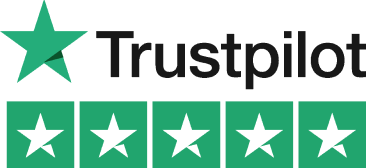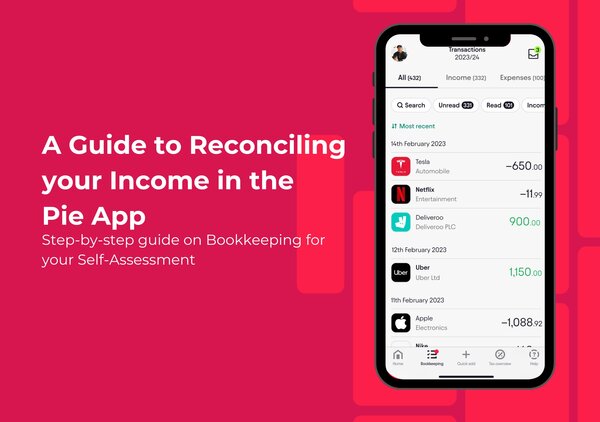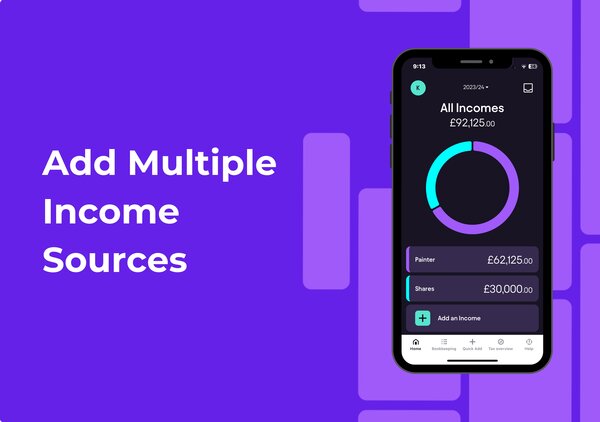Let’s Break This Down Together...
SEIS might sound complicated, but it’s actually one of the smartest ways for UK startups to raise funds, and for investors to cut their tax bill. If you’ve ever wondered how it really works, you’re in the right place.
This article walks you through everything from how SEIS tax relief works to who’s eligible and how to claim it. We’ll cover what founders, investors, and advisors all need to know to stay on HMRC’s good side.
By the end, you’ll know exactly how SEIS could help your business grow or make your next investment go further. Ready to make sense of it all? Let’s dive in.
What is the Seed Enterprise Investment Scheme (SEIS) and why should you care?
SEIS was introduced in 2012 to encourage investment in early-stage companies. It has since helped thousands of startups secure crucial initial capital.
SEIS is one of several UK government-backed venture capital schemes designed to help early stage businesses raise capital and attract potential investors.
For qualifying companies, SEIS allows you to raise up to £250,000 from investors. This is an effective way to raise investment, as SEIS offers investors unique tax advantages, making it highly attractive for those looking to support early stage businesses.
I once advised a fintech startup that secured £200,000 through SEIS in just three weeks. The tax incentives, including the potential for tax free growth, made their proposition irresistible to angel investors who might otherwise have hesitated.
How SEIS tax relief works for investors
Investors can claim 50% income tax relief on investments up to £100,000 per tax year. Putting £10,000 into a qualifying startup could reduce their tax bill by £5,000. In addition to this, SEIS offers significant tax advantages and SEIS tax benefits, including further reliefs and exemptions that make investing in early-stage companies more attractive.
If shares are held for at least three years and the company succeeds, any profit is completely free from Capital Gains Tax. For investors, having a clear exit strategy such as a trade sale, management buy-out, or refinancing is important, though the timing and outcome are often uncertain in these high-risk investments. This creates a powerful incentive for patient capital.
Should the investment not work out, loss relief allows investors to offset losses against their income tax bill. These tax reliefs apply to the money invested, significantly reducing the real financial risk of backing early-stage ventures.
Investors can carry back the tax relief to the previous tax year. This flexibility around when to claim benefits can be particularly valuable for tax planning.
For investors with other capital gains, there’s also the option to get 50% CGT relief on gains reinvested into SEIS companies. This creates a compound tax advantage.

Is your company eligible for SEIS?
To qualify, your company must be UK-based with a permanent establishment in the UK. It must have been trading for less than 2 years when shares are issued. To qualify for SEIS, a company must meet all HMRC requirements and be considered a SEIS qualifying company, ensuring eligibility for the scheme.
Your business needs fewer than 25 employees and gross assets must not exceed £350,000 before the share issue. These limits ensure the scheme targets genuinely early-stage companies. SEIS qualifying companies must also ensure that the issuing company meets all relevant criteria at the time of the share issue.
Most trades qualify, but there are exceptions including property development, financial services, and farming. HMRC maintains a comprehensive list of excluded activities. To be a SEIS qualifying company, the company's trade must be a qualifying trade, and only qualifying trades are eligible for SEIS/EIS funding. The company cannot have previously raised money under EIS or Venture Capital Trust schemes before SEIS.
The investment must be for qualifying business activities, and the company must demonstrate that it is seeking risk finance investment as defined by HMRC.
Funds raised must be spent within 3 years of the share issue. This ensures the capital is deployed for genuine business growth rather than being held indefinitely. As part of the application process, a comprehensive business plan and financial forecast are required to support the SEIS application and demonstrate business viability to HMRC and potential investors.
Who can invest under SEIS?
Investors cannot be employees of the company, though directors can invest. This is a key difference from some other investment schemes. Private investors and EIS investors are typical participants in SEIS and EIS schemes, seeking tax relief and supporting early-stage companies.
An investor must not hold more than 30% of the company’s shares, voting rights or assets. This prevents the relief being used for majority ownership transfers. The intended investment amount and the allocation of SEIS shares must comply with these limits to ensure eligibility for the scheme.
The shares must be held for at least 3 years to retain the tax relief. They must be newly issued ordinary shares with no preferential rights. Family members of company founders may face restrictions under the “connected persons” rules. These prevent tax relief being claimed for investments between closely related parties.
There can’t be any arrangements to protect against investment risks. SEIS is designed for genuine risk capital, not guaranteed returns. SEIS investments carry significant risk, and it is important for investors to fully understand these risks before proceeding.

Getting SEIS advance assurance approved
Companies need to submit an SEIS1 form to HMRC to check eligibility. After submitting the SEIS1, companies should also consider the advance assurance application process, which involves seeking pre-approval from HMRC to confirm that their proposed investment will qualify under the scheme. Once approved, they can issue SEIS3 certificates to investors who use these to claim their relief.
Many founders seek “advance assurance” from HMRC before approaching investors. There are different types of advance assurance available, including SEIS advance assurance, SEIS advanced assurance, and EIS advance assurance, each confirming eligibility for their respective schemes. This provides comfort that the investment will qualify for the tax benefits and helps attract investors.
The advance assurance application typically requires detailed information about the company, including financial forecasts to demonstrate future growth and viability. Engaging legal services is important at this stage to ensure all documents are correctly prepared and the application meets HMRC requirements.
Before issuing shares, companies must accept payment from investors to comply with SEIS/EIS rules. Investors claim their tax relief through their self-assessment tax returns. The process is straightforward once they have their SEIS3 certificate.
Detailed record-keeping is essential for compliance. HMRC may check eligibility for up to 6 years after the investment. Companies must also submit a compliance statement to HMRC to confirm they have met all eligibility criteria.
If you’re unsure about any aspect of SEIS compliance, consult with a specialist tax advisor. The rules are strict, and mistakes can be costly. Legal services can help ensure compliance and proper structuring of your investment arrangements.
For companies looking to raise further funds, it is common to transition from SEIS to EIS investment, allowing continued access to tax reliefs as the business grows.
Claiming SEIS tax relief
Claiming SEIS tax relief is a straightforward but essential step for investors looking to maximise the benefits of the Seed Enterprise Investment Scheme. After making a qualifying SEIS investment in an early stage company, investors are entitled to claim income tax relief of up to 50% of the amount invested.
This generous tax relief can be set against your income tax bill for the tax year in which the investment was made, making it a powerful incentive to encourage investment in innovative startups.
To claim your SEIS tax relief, you’ll need to wait until you receive your SEIS3 certificate from the company you’ve invested in. Once you have this, you can include the details on your self-assessment tax return for the relevant tax year. The process allows you to directly reduce your income tax liability, and if your tax bill is smaller than the relief due, you may be able to carry back the relief to the previous tax year, further increasing your flexibility.
The enterprise investment scheme SEIS is designed to make investing in early stage companies more attractive by offering these substantial tax benefits. By following the correct process and ensuring you claim your income tax relief promptly, you can make the most of your SEIS investment and support the growth of the UK’s most promising new businesses.

Common SEIS mistakes to avoid
Missing timing requirements is a frequent error. The company must be less than 2 years old when shares are issued, with no exceptions. Using SEIS funds for non-qualifying activities can invalidate the tax relief for all investors. This can damage investor relationships and company reputation. If the company fails, investors may lose their capital, but SEIS tax reliefs can help mitigate some of these losses.
Exceeding the £250,000 SEIS limit within the relevant period is another common mistake. This cap applies across all SEIS fundraising rounds. Failing to file the necessary paperwork with HMRC within required timeframes can jeopardise tax relief. Deadlines are strictly enforced. It is important to ensure compliance and avoid any arrangements that could be seen as tax avoidance, as HMRC may impose penalties for misuse of the scheme.
Be careful with company structures and share arrangements. Preferential shares or rights can disqualify SEIS relief, even if unintentional. Including exit strategies in SEIS documentation is discouraged, as it may de-risk or invalidate the application for tax relief schemes.
SEIS is designed to support economic growth by encouraging investment in startups and early-stage companies.
Final Thoughts
SEIS offers a win-win situation for both startups and investors. The significant tax incentives make early-stage investment more appealing in an otherwise high-risk category. While the rules are strict, the benefits make navigating the complexity worthwhile. Proper planning can dramatically improve your chances of raising critical first-round funding.
The scheme continues to evolve, with periodic reviews and adjustments. Staying informed about current requirements ensures you maximise the opportunity.
Pie tax: Simplifying SEIS Tax
Wondering if your startup qualifies for SEIS? The UK's first personal tax app can help you find out instantly, saving you time and uncertainty. Pie tax provides clear guidance on SEIS eligibility criteria specific to your business type. Our intelligent assessment tools ensure you don't miss out on this valuable tax incentive.
We help you manage documentation requirements and deadlines, making it easier to stay compliant with HMRC's rules. Our automated reminders keep you on track throughout the process.
Our smart tools show investors exactly how much tax relief they could receive from backing your startup. This makes your funding conversations more productive and increases conversion rates.
Fancy seeing how it works? Take a look at the Pie tax app today.

Quick and Easy Guide to Adding SEIS Tax Relief in the Pie App
Follow these easy steps to ensure your tax reliefs are accurately recorded for your self-assessment:
To add SEIS tax relief, simply tap ‘Quick Add’ on the home screen of the Pie Tax App. From there, select ‘Add Tax Relief’, then choose ‘Tax Relief Investment Schemes’.Step 1

Next, select the specific investment relief you want to claim. Enter the name of the investment, the amount, and the date the investment was completed.Step 2












